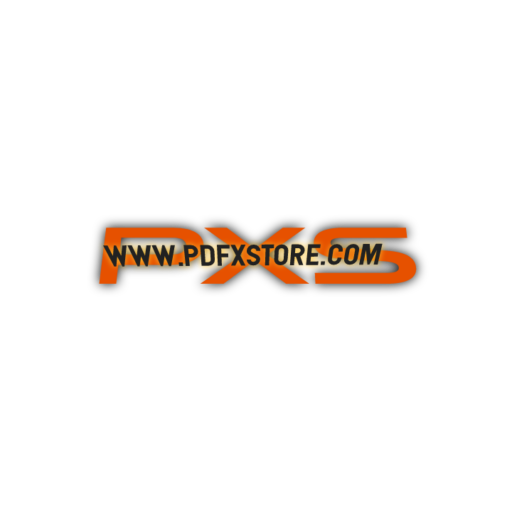Get the Right Home Insurance Coverage for Your Needs
Did you know many homeowners in the UK are not fully insured? This leaves them at risk of big financial losses if something unexpected happens. It’s key to have the right homeowners insurance to protect your home and money.

This guide will help you understand insurance policy options for homeowners. We’ll cover the different policies and how to pick the best one for you. We’ve got all the info you need.
Key Takeaways
- Understand the importance of having the right home insurance coverage.
- Learn about the different types of homeowners insurance policies available.
- Discover how to choose the right insurance policy for your needs.
- Find out what factors to consider when selecting an insurance provider.
- Get tips on how to ensure you’re not underinsured or overinsured.
Understanding the Basics of Home Insurance
Learning about home insurance helps you protect your property well. There are two main types: Buildings insurance and Contents insurance. Buildings insurance covers your home’s structure and fixtures. Contents insurance protects your personal items inside.
What Home Insurance Actually Covers
Home insurance usually covers damage from natural disasters like storms and floods. It also covers theft and vandalism. Dwelling coverage is key and helps pay for repairs or rebuilding if your home is damaged or destroyed.
For example, if a pipe bursts and damages your kitchen, your buildings insurance might cover the repairs. If your home is burglarized and items are stolen, your contents insurance can help replace them.
Common Exclusions and Limitations
Home insurance offers wide coverage but has some exclusions and limitations. Most policies don’t cover damage from maintenance issues or gradual deterioration. Also, high-value items like jewelry or art might need extra coverage or special riders.
| Coverage Type | Typical Coverage | Common Exclusions |
|---|---|---|
| Buildings Insurance | Structure of the home, fixtures, and fittings | Maintenance issues, gradual deterioration |
| Contents Insurance | Personal belongings, furniture, and appliances | High-value items, certain types of damage (e.g., flooding if not specified) |
Types of Home Insurance Coverage in the UK
The UK home insurance market has many coverage types. Homeowners can pick policies that fit their needs. This ensures their property and belongings are well-protected.

Buildings Insurance: Protecting Your Structure
Buildings insurance is key for your home’s structure. It covers walls, roof, floors, and built-in fixtures. It’s a must for mortgage holders, as it pays for repairs or rebuilding after damage.
When choosing buildings insurance, think about your home’s rebuilding cost, not its market value. This makes sure you have enough coverage in case of a total loss.
Contents Insurance: Safeguarding Your Belongings
Contents insurance helps replace or repair your personal items if they’re lost, stolen, or damaged. It’s crucial for protecting your furniture, electronics, and clothes.
To find the right amount of contents insurance, add up the value of your belongings. Don’t forget to cover high-value items like jewelry or artwork.
Combined Policies: The Best of Both Worlds
Many providers offer combined policies for buildings and contents insurance. This is a smart choice as it saves money and simplifies your insurance. You might even get discounts.
Combined policies give you all-around protection for your home and belongings. This brings peace of mind and financial security.
Additional Coverage Options Worth Considering
Think about additional coverage options to boost your home insurance. Options include accidental damage, personal possessions, or home emergency cover.
Check if you need extra coverage based on your situation. It’s also important to review your policy often to keep it up-to-date and effective.
Assessing Your Home Insurance Needs
To make sure you’re well-protected, it’s key to look at your home insurance needs closely. You need to know what parts of your home need insurance and how much coverage they should have.
Calculating the Correct Buildings Coverage Amount
Finding the right buildings coverage is very important. It’s not the same as your home’s market value. It’s the cost to rebuild your home if it were destroyed.
Rebuilding Costs vs. Market Value
It’s important to know the difference between rebuilding cost and market value. The rebuilding cost depends on construction costs, labor, and materials.
Determining Appropriate Contents Coverage
Contents coverage is for your personal items in your home. To figure out how much coverage you need, make a list of your belongings.
Special Considerations for High-Value Items
Items like jewelry, art, or antiques might need special coverage because of their high value. You might need extra coverage or a separate policy for these items.
By carefully looking at your home insurance needs, you can make sure you have the right coverage. This gives you peace of mind and financial protection against unexpected events.
Understanding Policy Details and Terms
It’s key to understand your home insurance policy well. These policies are filled with terms that might be hard to get. Knowing what they mean helps you make smart choices about your coverage.
Getting to know the details of your policy is crucial. This includes knowing what your policy covers, its limits, and any exclusions. This knowledge helps you understand your protection better.

Decoding Insurance Jargon and Fine Print
Insurance policies often use complex language. Terms like “excess,” “premium,” and “indemnity” might confuse you. It’s important to understand these terms to know what your policy covers and what it doesn’t.
For example, knowing the difference between “new-for-old” and “indemnity” coverage is key. New-for-old coverage means getting new items if old ones are damaged. Indemnity coverage considers how much items have depreciated over time.
Excess Amounts and How They Affect Premiums
Most home insurance policies have a compulsory excess. This is the minimum you must pay when you make a claim. You can also choose to pay a voluntary excess to lower your premium.
Let’s say your policy has a £200 compulsory excess and you add £300 voluntary. Your total excess would be £500. While this might lower your premium, make sure you can afford it if you need to make a claim.
New-for-Old vs. Indemnity Coverage
The type of coverage you choose affects your claim payouts. New-for-old coverage means getting new items without considering depreciation. Indemnity coverage takes depreciation into account, which might mean lower payouts.
It’s important to understand these differences. This ensures you have the right protection for your belongings.
UK-Specific Home Insurance Considerations
In the UK, homeowners face unique challenges when it comes to home insurance. The country’s varied geography and property types mean no single insurance plan fits all. It’s important to tailor your insurance to your specific needs.
Flood Risk Areas and Coverage Options
Homeowners in flood risk areas often find it hard to get insurance that covers flood damage. This can be pricey. If you live in a flood zone or have had flooding, look for insurers that offer this coverage. Some companies specialize in high-risk areas, but expect to pay more.
Listed Buildings and Conservation Areas
Those with listed buildings or properties in conservation areas have special insurance needs. These homes require coverage that respects their historical value and repair needs. It’s key to find insurers who get these unique requirements.
Legal Requirements and Mortgage Lender Stipulations
UK homeowners must meet legal and mortgage lender insurance rules. Most lenders demand buildings insurance to secure a loan. Knowing these rules and following them is vital for protecting your home.
| Property Type | Insurance Considerations | Typical Requirements |
|---|---|---|
| Flood Risk Areas | Specialized flood insurance, higher premiums | Buildings and Contents Insurance |
| Listed Buildings | Historically accurate repair materials, specialized insurers | Buildings Insurance with specific conditions |
| Standard Residential | General home insurance policies | Buildings Insurance as per mortgage terms |
Understanding these UK-specific home insurance needs helps homeowners find the right coverage. This ensures they’re well-protected against various risks.
Finding the Right Home Insurance Provider
There are many home insurance providers in the UK. Finding the right one needs careful thought. Homeowners must consider several factors to get the best coverage for their needs.
Researching Insurance Companies and Their Reputation
Choosing a home insurance provider starts with research. It’s important to look at the reputation of insurance companies. Also, their customer service and claim handling are key.
Checking customer reviews and ratings gives valuable insights. A positive review from a satisfied customer can be very telling.
“Aviva’s customer service has been exceptional throughout the claims process, making a stressful experience much more manageable.”
This shows how important reputation is in choosing an insurer.
Comparing Quotes Effectively
Comparing insurance quotes is crucial. Homeowners should look at more than just the premium cost. Coverage options and excess amounts are also important.
| Provider | Premium Cost | Coverage | Excess |
|---|---|---|---|
| Provider A | £150 | £250,000 | £100 |
| Provider B | £180 | £300,000 | £150 |
| Provider C | £120 | £200,000 | £200 |
Online vs. Broker vs. Direct Purchase Options
Homeowners can buy home insurance online, through a broker, or directly. Each option has its benefits. Brokers offer a wide range of policies and advice, while online purchases are quicker.

Using Comparison Websites Effectively
Comparison websites help compare home insurance quotes. But, it’s wise to also contact insurers directly. This gives a better understanding of their policies and possible discounts.
By following these tips, homeowners in the UK can make smart choices. They can find the right home insurance provider, ensuring they get the best coverage at a good price.
Factors That Influence Your Home Insurance Rates
Home insurance rates are not random. Several key factors affect your premiums. Knowing these can help you choose the right policy. Your rates depend on where you live, your property type, and how you use it.
Location and Property Characteristics
Your home’s location and features greatly impact your insurance rates. Insurers look at crime rates, flood risks, and property age and type. For example, a safe area with strong buildings might cost less.
Andrew Palmer, Insurance Expert, says, “Your property’s location is key. Places with natural disasters or high crime rates have higher rates.”
Security Measures and Their Impact
Security systems can lower your insurance rates. Alarms and CCTV cameras reduce theft and vandalism risks. A survey found homes with these systems could save up to 20% on insurance.
Jane Doe, Security Specialist, notes, “A good security system protects your home and saves money on insurance.”
Claims History and No-Claims Discounts
Your claims history affects your rates. Insurers see claim-makers as higher risk. But, a no-claims history can lead to discounts.
John Smith, Insurance Broker, says, “A no-claims bonus can lower your premiums over time. Avoiding claims helps build a no-claims history.”
Occupation and Property Usage
Your job and how you use your property also matter. Business or rental properties might need special insurance, affecting rates. “Knowing how your occupation and property usage affect rates helps choose the right policy,” Emily Johnson, Insurance Consultant advises.
It’s crucial to tell your insurer about your property’s use to avoid problems.
Smart Ways to Save on Home Insurance
Smart homeowners find ways to cut down on home insurance costs. By making a few smart changes, they can lower their premiums without losing coverage quality.
Increasing Security to Lower Premiums
Boosting your home’s security can lower insurance costs. Installing a burglar alarm reduces theft risk, making your home less risky for insurers. Also, locking doors and windows when you’re out helps lower premiums. Make sure to turn on any security alarms when you leave.

Bundling Policies for Discounts
Combining home insurance with car insurance can save you money. Many insurers offer discounts for bundling policies. This can simplify your insurance and cut costs. Check with your insurer about bundling options for discounts.
Annual vs. Monthly Payment Options
How you pay your insurance can affect your costs. Paying yearly instead of monthly can save you money. Some insurers charge extra for monthly payments. Paying in one go can be cheaper.
When and How to Negotiate Better Rates
Negotiating a better rate with your insurer can save you money. Compare insurance quotes from different providers to find better deals. Use a competitive offer to negotiate a better rate with your current insurer. Regularly review your policy to find savings.
Making a Successful Home Insurance Claim
To make a successful home insurance claim, you need to be well-prepared. Knowing the steps to file a claim is key for a smooth process.
Documenting Your Property and Belongings
Documenting your property and belongings is crucial. Take inventory of your items and record their value. This helps a lot when filing a claim.
Digital Inventory Tools and Methods
Using digital tools can make documenting easier. Apps and software help you keep a detailed record of your stuff. This makes filing a claim simpler.
The Claims Process Step-by-Step
Knowing the claims process is important. It starts with notifying your insurer and providing documents. Then, you wait for the claim to be processed.
When you claim, call the police first for theft or loss. Then, contact your insurer quickly. Be ready to show evidence for your claim.
| Claim Step | Description | Timeline |
|---|---|---|
| Notify Insurer | Inform your insurance company about the claim | As soon as possible |
| Provide Documentation | Submit required documents and evidence | Within a few days |
| Claim Processing | Insurer reviews and processes the claim | Several days to weeks |
Handling Claim Disputes Effectively
If there’s a dispute, knowing your rights is key. You might need to negotiate with your insurer or get outside help.
Key tips for handling disputes: Keep good records, understand your policy, and seek advice if needed.

Reviewing and Updating Your Home Insurance
It’s important to check and update your home insurance often. Life changes, and so should your insurance to keep you protected.

Regular checks make sure your policy is still right for you. It’s not just about having insurance; it’s about having the right one.
When to Reassess Your Coverage Needs
It’s key to check your coverage after big changes. For example, if you’ve renovated or added to your home, you might need more buildings insurance.
Also, if you’ve bought new, expensive items, you might need to update your contents insurance. This way, you won’t be underinsured if you need to make a claim.
Life Events That Require Policy Updates
Some life events, like moving, getting married, or having kids, can change your insurance needs. For example, moving might change your flood risk or property value, affecting your insurance.
Updating your policy for these events keeps your coverage right and effective.
Annual Review Best Practices
Doing an annual review of your home insurance is a smart move. It lets you check your coverage limits, excess, and any extra features or endorsements.
It’s also a chance to compare your policy with others. This might help you save money or get better coverage.
Conclusion: Securing the Perfect Home Insurance Coverage
To protect your home and belongings, you need the right insurance. You must decide between buildings, contents, or a combined policy. It’s also important to figure out the exact amount of coverage you need.
Understanding home insurance basics is key. This includes knowing what it covers and what’s not included. By assessing your needs and reviewing policy details, you can find the best policy for you.
It’s vital to regularly check and update your policy. This ensures it fits your changing needs. With the right policy, you can rest easy knowing your home and belongings are safe. Choosing the right insurance is a big step towards securing your financial future.
FAQ
What is the difference between buildings and contents insurance?
Buildings insurance covers your home’s structure, like walls and roof. Contents insurance protects your personal items, such as furniture and appliances.
What is typically excluded from a standard home insurance policy?
Standard policies often don’t cover floods, earthquakes, or maintenance issues. You might need extra coverage or a separate policy for these risks.
How do I calculate the correct buildings coverage amount for my home?
To find the right coverage, think about rebuilding your home’s cost. This includes materials and labor. You can get help from a pro or use online tools for an estimate.
What is the difference between new-for-old and indemnity coverage?
New-for-old coverage gives you new items of similar quality. Indemnity coverage pays out the item’s current value, considering depreciation.
How can I lower my home insurance premiums?
Lower premiums come from better security, like alarms or CCTV. Bundling policies and a clean claims history also help.
What factors influence my home insurance rates?
Rates depend on location, property type, security, claims history, and occupation.
How do I make a successful home insurance claim?
For a successful claim, document your property and belongings well. Understand the claims process and provide solid evidence.
When should I review and update my home insurance policy?
Review your policy yearly or after big life changes, like renovations. This ensures you’re covered.
What are the benefits of using a comparison website to find home insurance?
Comparison websites let you see quotes from different providers. This can help you find the best deal and save money.
How does my occupation affect my home insurance rates?
Jobs that involve working from home or are high-risk can raise your rates. This is because of increased risks or liabilities.
What is the difference between annual and monthly payment options for home insurance?
Annual payments often get you a discount. Monthly payments might be easier but could have extra fees or interest.



